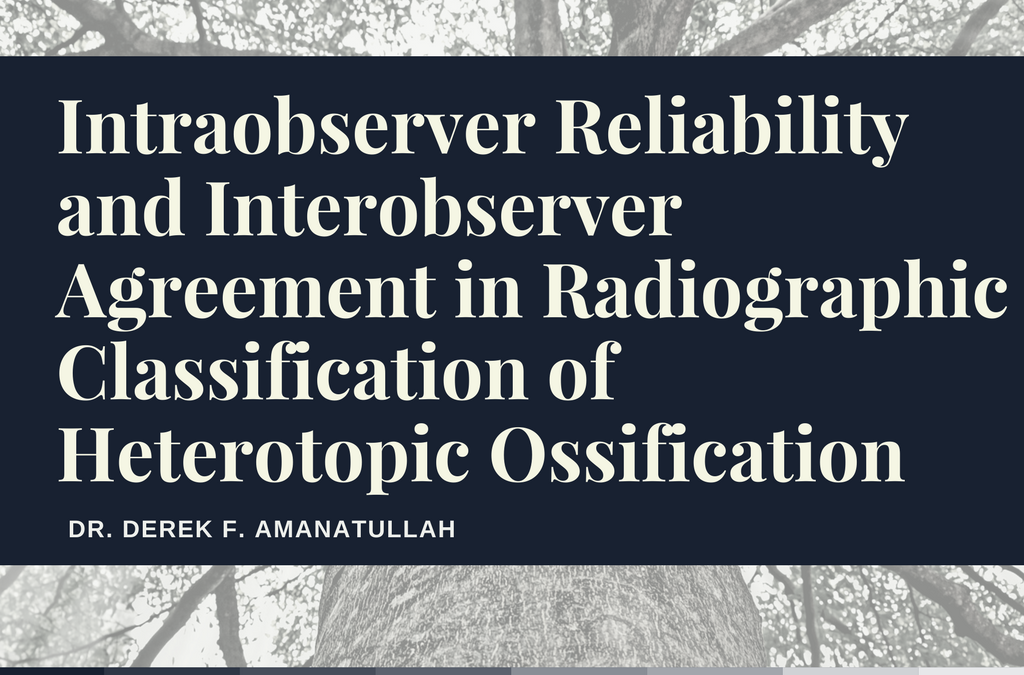In the field of medicine, there are a number of different radiologic classifications that surgeons use to determine the amount and severity of heterotopic ossification, or the development of bone matter where it does not belong. While heterotopic ossification occurs after total hip arthroplasty (THA), there is no unanimity for which scale best measures and classifies heterotopic ossification. The Brooker scale is commonly used (47%) in published research studies. However, this system lacks adequate intra- or inter-observer reliability. The Della Valle system simplifies classification to increase reliability and interobserver agreement. However, the assumption that the latter method better measures heterotopic ossification has never been definitively proven.
In his study, Dr. Derek Amanatullah attempts to discern whether the Brooker scale would experience more interobserver agreement and intraobserver reliability than the Della Valle scale. To show interobserver agreement, multiple doctors would have to agree on a ranking on the scales. For intraobserver reliability, individual doctors need to agree with a past evaluation that they themselves made.
By and large, both scales did well; the two methods were similarly effective in measuring interobserver agreement and intraobserver reliability for each subject. However, the Della Valle classification system was found to be more consistent in gauging intraobserver reliability in certain circumstances. Dr. Amanatullah postulates that the latter system may be more reliable than the Brooker method in distinguishing severe heterotopic ossification. Given its modestly increased reliability compared to the Brooker scale, orthopedic surgeons should consider switching to the Della Valle system when evaluating heterotopic ossification.


